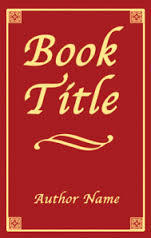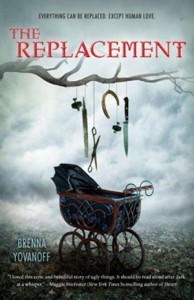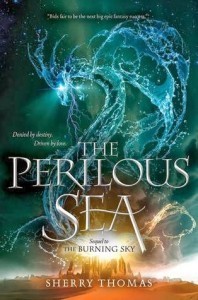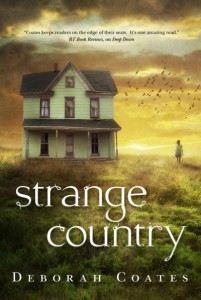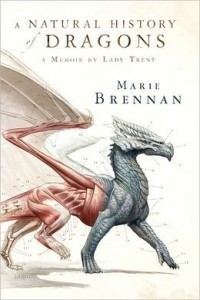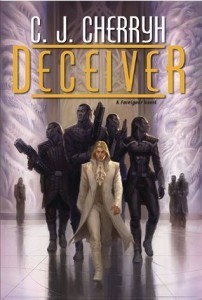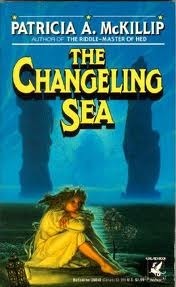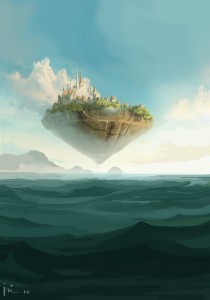Rachel Neumeier's Blog, page 372
May 10, 2014
I don’t understand spam.
Another hurdle It is actually out of this history we have one more controversy. The policies presented by the governing administration with regard to your Lokpal shopping process requires a research table associated with 8 that could current individuals who definitely are considered from the collection table driving with the Prime Minister. As a result our company is mired utilizing two screens research online cell together with a option section to help you designate the ombudsman..
I mean, what is the purpose of this? What is the point of sending this to (I presume) thousands of random blogs? Why would you bother?
Incidentally, I never ever check my spam folder for real messages. I used to check occasionally, but all the things in the spam folder have always only been spam, so I quit. I presume real people would be capable of sending me a real email and telling me they are stuck in the spam filter, though I don’t know how they could be unless they put random word strings or the word “Viagra” in their message.
Some really odd spam messages do not get caught in the spam filter. Mostly along the lines of “Brilliant post I really admire your perspicuity keep up the great content” — you see, harder for a filter to pick that up. I don’t see the point of sending that kind of spam, either. Can it be possible that anyone anywhere actually clicks on a link sent in a spam message?
Anyway, I was just emptying my spam folder and saw the above and wondered what prompts enough people to put spam messages together so that I get a thousand a day. File under: people, weird motivations, I guess.

May 9, 2014
Recent Reading: CODE NAME VERITY
Fiction writers, at least in their braver moments, do desire the truth: to know it, speak it, serve it. But they go about it in a peculiar and devious way, which consists in inventing persons, places, and events which never did and never will exist or occur, and telling about these fictions in detail and at length and with a great deal of emotion, and then when they are done writing down this pack of lies, they say, There! That’s the truth!
We all recognize that quote, don’t we? Of course that’s from Ursula K. Le Guin’s famous introduction to THE LEFT HAND OF DARKNESS. I don’t actually remember TLHoD very well (I read it a long time ago), but I remember this essay about writing and truth. Of course CODE NAME VERITY is based on events that were a lot more literally true than Le Guin had in mind, since it’s historical rather than fantasy. Still, it’s fiction, of course. But still true. It’s all about truth.
What’s strange about the whole thing is that although it’s riddled with nonsense, altogether it’s true – Julie’s told our story, mine and hers, our friendship, so truthfully. It is us.
CODE NAME VERITY is all about truth. And courage, and the fight against evil, and seizing victory from the teeth of defeat. But the heart of the story is the friendship between Maddie and Julie.
As the story opened, I had many guesses about what exactly was going on. It even seemed possible that Julie was telling the truth, perhaps not the whole truth, but pretty much nothing but the truth. I probably would confess to anything, if I were being tortured. (Maybe not. It’s hard to know about courage and resilience and cleverness until you’re there.)
Anyway: essentially all my guesses were wrong. But, well, I will just say that Julie is certainly not short of courage and resilience and, most of all, cleverness.
This is Maddie’s story, really. Or, not really. This is Julie’s story, but buried in Maddie’s point of view and wrapped in a tissue of lies.
This book is brilliantly constructed. Every detail is perfect — literarily, I mean, but probably literally, too, judging from the author’s note at the end. The writing is vivid, but thankfully we are spared elaborate, detailed descriptions of Gestapo interrogation methods. This would be safe to give to a kid to read. In fact, it should be given to kids to read, in this era when WWII seems like ancient history.
If I taught literature or history, either one, I would assign this. As it is, all I can do is say: everyone should read this. I suggest you buy it in paper. You will want to flip back and forth through the early scenes as soon as you hit the back half of the story. And, if you are like me, you will want to look at it there on your shelves.

Another beginning: KEHERA
This one I’m not sure of. Take a look:
* * *
When she was ten years old, Kehera Elin fell in love. She fell in love with Captain Ité Korastan, as he rode triumphantly through the city and up to the foot of the palace steps, where she stood beside her father. Beyond the open courtyard, the city spread down the hill: cobbled streets lined with low, square buildings of pale gold stone, steep roofs of silvery pine shingle shaded by great oaks and slender goldenthorn. Beyond the city, the mountains rose vast against the eastern sky, tawny in the low-angled light of early afternoon. It all seemed to Kehera like a fitting backdrop for the youngest and most dashing of her father’s captains.
Ité Korastan lifted his sword high in salute to Kehera’s father, a salute that to Kehera looked somehow at once proud and ironic and self-deprecating. He waved forward his standard-bearer, so that the whole enthusiastic crowd could see the golden Cat of Timir snapping out in the wind below the Griffin of Harivir and know that Timir’s stolen banner had been recovered and could now be restored to its people and its place.
Kehera fell in love with Captain Korastan right then.
Ité Korastan was her first love, and her brightest. She held her love silently to herself, a secret, painful joy in her heart. She didn’t even tell her companion Eilisè, though she told Eilisè everything; nor even her brother Tiro, though she told him everything she didn’t tell Eilisè. She didn’t even mind sharing her love with half the grown-up ladies of her father’s court.
That fall, when Ité Korastan was killed in yet another of the interminable skirmishes between Harivir and Emmer, Kehera thought she would die, too. She knew she would never fall in love with anyone again.
By the time she was fifteen, Kehera understood that heirs did not marry for love. Nor did they marry captains, even if the captains were young and dashing. A princess who would be queen married a duke or a duke’s heir, a man who would bring her important family connections and who would strengthen the tie between his land’s minor Immanent and the great Immanent Power of Direïniy-Ciör. Love was not something a queen could consider when planning marriage.
But Kehera could not quite see whom she should marry herself. The Duke of Risaniòn was too old and too grim; Kehera didn’t like either him or his Immanent Power and doubted he would make a good king. The Duke of Lanis was impossibly annoying. He couldn’t tell minor annoyances from major disasters and complained about everything equally, an constant irritating whine of disapproval and disappointment.
Kehera did like Duke Riheir Coärin of Hereil, who was always kind. He wasn’t so very old, only ten years older than she was. She liked his voice, which was cheerful and warm and never whiny. He’d taught Tiro and her how to make wonderful things out of paper, swans and fish and stags, and he’d taught them how to make and fly kites; he’d made her a beautiful one she’d hung on her wall because she liked it too much to fly it. But then Duke Riheir married a woman from his own province. The woman was pretty and soft-voiced and pretty; she had a daughter right away, and then a son. Then she died, but Duke Riheir wore black and lavender afterward, so Kehera knew he was not planning to marry again for a long time.
There were two boys Kehera thought might do. One of them, the heir to Viäriny on the coast, was bright and funny, and she thought she might like him, but he was also only nine years old. The other, the heir to the important town of Timir that sprawled along the southern edge of Imhar Bay, was tall and handsome and a year older than Kehera, but he was not very clever. Kehera supposed the little one would get older, whereas the dull one probably wouldn’t get smarter, but she was not eager to marry a boy barely more than half her age.
It was difficult to figure out what would be best for Harivir and for herself.
When she was seventeen, Kehera decided she was old enough to put aside childish dreams of love. She told her father she would marry whomever he decided was best. He rather kindly said that she was still very young and there was no need to rush forward into the future, by which she knew he also thought the heir of Viäriny would do, but might as well grow up a bit.
Two months before she turned twenty, Kehera found out that everything she’d thought she’d known about princesses and marriage was wrong.
* * *
Now, is that too romance-y? Actually there is an important romance in this story, but it is not, well, a very romance-y romance, if you know what I mean. Kehera meets the male lead about a third of the way through the book, but in a decidedly non-swoony way. They are both determined to defeat the bad guy and save the world, but “together” is not a thing for them for a long time.
This is also an oddly time-has-passed beginning for me, almost like a two-page prologue. In just another page, we hit the beginning of the adventure story.
I will add, I initially wrote this one as a reaction against irresponsible, flighty princesses who are told they must marry for the good of their kingdom, have a hissy fit and refuse, flounce off in disguise, get thrown together the guy they were supposed to marry, and fall in love with him after all. (I don’t remember which particular book sparked my rebellion against that plot; I probably hit a run of similar fantasy novels all at once.) Kehera is all about responsibility, and the farthest thing from flighty you can imagine.

May 8, 2014
Beginnings: KERI
Here are the first couple pages of KERI. What do you all think?
* * *
“They say Lord Dorric is dying,” Tassel told Keri, swinging without ceremony into the bakery kitchen. She let the door slam shut behind her. It banged hard because its frame had warped in the wet spring weather, an event predictable as the blooming of crocuses and daffodils. The bell chimed, once and again and a third time as the door bounced against the frame. The chime was a bright cheerful sound, but it reminded Keri that she needed to hire someone to replace the warped frame.
Keri’s mother could have got out a hammer and a handful of twopenny nails and fixed the doorframe herself. If Keri tried to do that, she would probably bend all the nails and crack the doorframe and knock the head off the hammer. But since her mother’s death, the bakery never seemed to earn enough in a week to pay a carpenter to repair the door, so from week to week the door continued to bang in its frame. These days all such tasks seemed to go undone, until both house and shop creaked with neglect.
Keri sighed, blinked, and looked back at the immediate task facing her – one she could at least address properly, and one that would earn decent coin. Maybe this cake would even pay for a carpenter at last.
Tassel began to hitch herself up to sit on the edge of the scarred kitchen table, but then, careful of the lace on her gown, sat on a stool instead and only leaned an elbow on the table. The gown was pearl-gray and pink and frothy with lace, certainly nothing sensible for a working kitchen. If Keri had tried to wear a dress like that, even if she hadn’t been working in the bakery kitchen, she would have stained the fabric and pulled out bits of lace within the hour. Tassel was the sort of girl who never tore or stained anything.
Tassel watched critically as Keri piped frosting around the circumference of a cake layer and then spread peach jam over the layer. “Did you hear what I said?”
Keri produced a wordless murmur, more interested in keeping the peach jam from oozing out of bounds than in Tassel’s far-from-surprising news. She placed a second cake layer on top of the first and repeated the piped circle of frosting and filling of peach jam.
“Yes, but my cousin says you can stand in his back pasture and actually watch the mist thinning,” Tassel persisted. Her voice dropped portentously. “He says, some days lately, you can see right out through the mist. He says you’d swear you can glimpse the tips of mountains against the sky.”
“Um?” said Keri. She placed the third layer on top of the second and began to spread frosting in large swirls across the sides and top of the towering cake.
Tassel clicked her tongue in exasperation. “Not Gannon, and not Timon either. It’s Cort who says he’s seeing mountaintops through the mist.”
Her attention momentarily captured, Keri glanced up. She tried to imagine Tassel’s youngest and most humorless cousin standing in his back pasture, gazing into the border of the Demesne, frightening himself with vague shapes in the mist. Her imagination failed her.
“There, you see?” said Tassel, satisfied that she had finally impressed Keri with the significance of her news. She then spoiled her portentous air by asking in an entirely different tone, “Are you going to use all that frosting? It’s the kind you make with soft cheese and whipped cream and white sugar, isn’t it?”
“It is,” said Keri heartlessly, “But yes, I’m going to use all of it.”
Tassel widened her eyes in a woebegone look and blinked, dark eyes filling with tears. It was a trick she had used to great effect as a child. Tassel had been an exquisite child, all huge eyes and curls and porcelain skin. She had been able to weep beautifully, with never a blotch or a reddened eye, even before she was steady on her baby feet.
Keri would have envied her friend that skill except it would have been wasted on her; she had never been pretty enough to make tears charming, and besides, Keri’s mother, unlike Tassel’s parents, had never been in the least susceptible to charm. At least, not since falling, briefly, for the charm of Keri’s father.
Tassel was still exquisite, although no longer a child, but Keri only raised an unimpressed eyebrow. “If you want some frosting, next time offer to whip the cream.”
“But that’s hard!”
Keri snorted, but she also relented so far as to dip a spoon into the bowl of frosting and hand it to her friend.
Tassel accepted the spoon cheerfully. “Mmm.”
“So what else does Cort say?”
“Only what I told you. But if it’s true, doesn’t it mean the Lord must really be dying this time?”
Keri only shrugged. Dorric Ailenn had been a fixture of the Demesne for forty years at least – more than twice Keri’s whole life. She had imagined the Demesne with a different Lord; of course she had. She probably spent a good deal more time on such daydreams than most people of the Demesne. But Lords of the Demesne were generally long lived. Keri thought Dorric would probably rule for another twenty years. No matter who imagined he could see through the boundary mist.

May 7, 2014
At last! A special announcement!
Yes, no title yet, obviously no cover yet, but The Contract has been proposed, negotiated, altered, agreed upon, and signed. Yes, I did read through the whole thing, and yes, I am glad I did not have to negotiate anything about it myself. Agents, yay!
So I can now tell you all that YES, I will have two new YA fantasy titles coming out from Random House, the first in 2016 and the second in 2017. Ah, YA, where the contracts stretch out into the distant future (or at least 2017 seems distant to me right at the moment).
I will be finishing the first manuscript (working title KERI) this summer — the due date is technically September 15th, so I will be aiming to finish the rough draft no later than August 1st, which means a pretty intense June and July. But I have written fast before and I’m confident I can do it again.
I will be writing the other next year, and although we haven’t decided on exactly which project will go forward, I don’t expect to have any trouble writing fifty or a hundred pages for Michelle (my editor) to take a look at — preferably I will actually ALSO get that done this year so Michelle can see whether she likes it and I will know exactly what to work on next year.
Lots to do, lots to do. I am having oh-my-God moments when I think about it all — but I do think everything is in good shape as of this moment — BLACK DOG short stories, check; H of S sequel, mostly check; KEHERA, check; and now KERI is the big thing to prioritize.
Now, as you may recollect, Random House is the one that brought out CITY IN THE LAKE and THE FLOATING ISLANDS, so you may be wondering about the possibility of sequels. So I will just mention here that the RH marketing department specifically requested two new stand-alones that will not be connected to each other or to the previous books I’ve written for them.
I actually feel that CITY is finished. I like its somewhat ambiguous ending. I don’t expect ever to write a sequel for it. But, in case you are curious, I do expect one day to write a sequel to ISLANDS, so you can expect that to appear eventually. But it is not something that I will be working on this year.
Anyway, it’s very exciting to finally be able to make the announcement!

May 6, 2014
Top Ten Covers I’d Frame as Art
This Top Ten idea came from The Broke and the Bookish, but I saw it first at By Singing Light.
I actually have been noting covers I REALLY LOVE recently, so I can actually do this Top Ten List with no trouble. Though I’m not going to try to list ten covers, but here is a handful of covers I really love:
I am going to start by noting that I share this particular cover-love moment with Maureen at By Singing Light. I’ve never read The Replacement and honestly I’m not sure it would be my kind of thing — looks awfully Dark Horror to me — but that cover! Do I love it? YES. Would I frame it as art? YES — but I wouldn’t hang it anywhere in my house. I have a friend who might like it on a wall, but it would be way too creepy for me to actually want it on a wall.
It probably won’t surprise you to know that the actual art I have on walls in my house is heavily Cavalier-themed. Not all of it, though! I have griffins and dragons in my house, too, among other things.
Anyway!
I haven’t read this one (nor the first book), but I am inclined to try this series on the basis of the covers. They are beautiful! I love the organic swirl of water, I love the idea, I love the colors. Would I hang this as art? Assuming it had no printing in the way? Absolutely. (I wouldn’t be keen on hanging any artwork with printing on it, personally, though your mileage may vary when it comes to cover art / art. But for this one, the colors even fit my house, so sure, I would hang it in my very own house.
Here are a few more:
I love the smoky look of A Clockwork Princess. There is some great detail work in this cover.
I love the wide spaces and lonely feel of Strange Country. It has a horror feel to it, not just a lonely feel — I haven’t read it, though, so after that my feeling about this cover might change. As art to hang, I prefer landscapes and don’t like close-up human figures, which to me are distracting. To hang in my own house, I would therefore prefer Deb Coates’ book to A Clockwork Princess.
I love everything about the Marie Brennen dragon covers — though I don’t know about actually hanging anatomical studies. On the other hand, if I had flower prints and Audubon prints, I could add these dragon covers right in and enjoy watching visitors do double-takes.
I have always particularly loved this specific FOREIGNER cover. To hang in my current small house, no. To hang this as a huge painting in an entrance hall of a big house, yes. I imagine you would get double-takes with this one, too, but it would be great.
This particular FOREIGNER cover was done by Todd Lockwood, but I could now think about all Michael Whelan’s covers and pick one … or two, or three … there are so many, and so many are truly beautiful. I *think* I might choose one of the Little Fuzzy covers, but, you know, whatever. I’m sure you all have your own vote for Best Whelan Cover. How about this one, for example?
I am a sucker for wistful covers. This one is lovely. I like it much better than the new cover for The Changeling Sea. Not that there is anything wrong with the current cover, I guess, but you have to know, when you ditch a Whelan cover in favor of any cover by any other artist, it is probably not going to be a big improvement.
I have always particularly loved THE FLOATING ISLANDS cover. Of course I would be glad to hang it, if I had the original artwork minus the printing. This is the real cover and the rough draft. I like both.
And one more, not a book cover at all:
This is a painting by Anatoliy Leushin, a Russian artist. I have a similar painting of his over my fireplace. I’ve had it for years now and still love the water and sky and the general image. This idea of reflected ruins is a theme Leushin repeats because (I imagine) it is popular. Or maybe because he just likes it. Any time I glance at his gallery, he has a version of this.
Mine is not quite like this, it is not nearly as ruined on the top, you can see the structure of the castle better. But the idea is the same. I am a very visual writer. I imagine you can see how Leushin’s work first gave me the image that inspired THE CITY IN THE LAKE.

May 5, 2014
There are two kinds of people in the world –
Those who read multiple books at one time and those who can’t understand how that is even possible.
Nathan Bransford has a post about that. There are currently 54 comments.
I’m with the majority of commenters: I can easily have both a fiction title and a nonfiction title going at the same time. I hate having two fiction titles going at once, but that has started to happen anyway, because all summer I will often be reading something normally, but listening to an audiobook while weeding or driving to shows. Right now I am reading PEACEMAKER but listening to Terry Pratchett’s MORT. I am not very keen on Pratchett’s early work, and MORT is earlier than I thought, but it’s okay. And I expect I will like the later Death titles better — I have that whole set on audio.
How about you? Do you willingly read more than one fiction title at a time?
Update (s)
Okay, my connection from home is starting to get iffy. Spring! Leaves on the oak trees! So internet on the weekends, not so much. Just FYI.
But! Yes, I did finish the basic draft of KEHERA. Finished it May 1st, so right on schedule. I do want to read through it from top to bottom, cutting and tweaking and probably adding a very short Chapter Eight, and I think that will take about a week. But I think I will let it set for two weeks first. So my schedule for May is:
a) Read things for a week.
b) Write 20-25 pp of a different work-in-progress so I can send the first 100 pp of that to Caitlin and see what she thinks — this will be the first time ever for sending smallish chunks rather than a complete rough draft. Not sure whether how I’ll feel about that.
c) Read through KEHERA and polish that up and send it to beta readers.
d) Read things for a week.
That will take me to June, and I will need to write the rest of the other WIP by August 1st, so yeah, busy summer. I don’t expect to get through very much of the ever-expanding TBR pile this year. I won’t be so pressed for time next year (probably).
Meanwhile! Honey won the points on Friday, but alas, a different girl won on Saturday and a different one again on Sunday. Still! She only needs four single points to finish. This coming weekend she and Kenya will be showing up near Chicago. It will be a smaller show, but it is still a major on Saturday (not Sunday). If Honey wins both days, she will be finished (with her championship, that means). If Kenya wins both days, SHE will be finished. I would not object to one of them winning one day and the other the next day, but alas, other girls are entered, so it is possible of course that neither of them will win either day and the whole drive will be for nothing. I must say, performance is less stressful, since whether you qualify or not is basically up to you and your dog, not the judge.
Meanwhile! My brother visited this weekend with his new puppy, Patience.
I enjoy this picture because of the red ghost of Folly, who was jumping off the couch right at that moment. Anyway, Patience is SO CUTE. She is half the normal size, maybe even less, but her structure is quite lovely. She stands in a stacked position all the time, so you can get a decent look at her, and since she doesn’t have the puppy-fluff thing going, you can see her properly. Her chest could be deeper, but it probably will deepen as she grows up. Her bite is iffy, but it’s gone back and forth and will most likely correct eventually. Meanwhile, she is perfectly adorable. Their other Cavalier is rather big for the breed, incidentally, so quite a contrast.
Anyway, on with Monday! I am going to read Cherryh’s PEACEMAKER today and tomorrow. I notice that she has felt compelled to include an appendix in this one, catching the reader up to what’s been happening. I do like how she put the appendix at the end because it’s out of the way and unobtrusive if you don’t want to bother, but there if a reader is actually just coming in to the series now and doesn’t want to back all the way up to the beginning. Mind you, I think the best way to read this series is from the beginning. But I get that this would be quite the project.
April 30, 2014
Launching your career as a gender-neutral writer
Here is a very interesting post by CS Friedman, over at Fantasy Book Cafe.
I do wonder sometimes whether anything would be different if I’d gone with initials instead of my name. CS Friedman’s experience is very interesting, and I like what she says about how to write believable male characters:
Overall, the split was about 50/50, with slightly more readers guessing I was female, and slightly more marketing people guessing I was male. Since I am indeed a woman, I was most interested in the male side of that statistic. What was there about my writing that revealed my true masculine nature?
I asked.
I expected to hear traditional reasons — such as my use of bloody combat scenes and themes of power and conquest–but the answer I got was quite different…and very interesting.
Many readers thought I was male because I understood how men thought.
As a kid, I think I defaulted to thinking that initials meant male. I can’t remember whether I knew that Friedman was a woman when I first read a book by her. But I’m pretty sure I never thought a woman couldn’t write a male character — or a man couldn’t write a female character. Anyway, interesting post!
An unexpected gift from unpublished papers
Two just-discovered short stories by Octavia E Butler are going to be published in e-format in June.
Butler’s untimely death was not only a human tragedy, it was a tragedy for SFF. I don’t think I have ever been more dismayed to hear of an author’s death. I’ll definitely be keeping an eye out for this pair of stories, to be published as a single ebook called simply Unexpected Stories.
Also, The Book Smugglers just reviewed Butler’s DAWN — a fantastic book.

